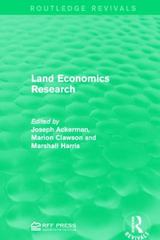Question
Consider the production function for a closed economy = 2 1/2()1/2 Assume that the savings rate s equals 20% and the depreciation rate equals 5%.
Consider the production function for a closed economy = 2 1/2()1/2 Assume that the savings rate s equals 20% and the depreciation rate equals 5%. Further, assume the growth rate of the labor force is 3% and the growth rate of technological progress is 2% per year.
a. Find the steady-state values of (i) capital per effective worker, (ii) output per effective worker, (iii) the growth rate of output per effective worker, (iv) the growth rate of output per worker, and (v) the growth rate of output.
Now we modify the basic Solow growth model described above, by including government spending as follows. The government collects taxes T to finance its government spending G in every period. Government spending per worker is given by a constant g, where g= G/N. Workers consume a fraction of disposable income C= (1-s)(Y-T). Suppose that the government has a balanced budget. Also assume that A= 1 and the growth rates of technological progress and the labor force are zero, = = 0.
b. Write down the capital accumulation equation. With the help of a diagram, illustrate that there can be two steady-state values of capital per worker (k*=K*/N). Carefully label your diagram.
c. We can focus on the high k* and ignore the low k* because the low k* is an unstable steady state. What is the effect of an increase in g on k*? What are the effects of an increase in g on aggregate consumption C? Explain.
d. Now we modify the way we define government spending. Suppose that government spending G is proportional to aggregate output Y, where G= zY. That is, government spending is a fraction z of aggregate output Y. Are there two steady-state values of capital per worker? What are the effects of an increase in z on capital per worker k* and aggregate consumption C? Explain.
Step by Step Solution
There are 3 Steps involved in it
Step: 1

Get Instant Access to Expert-Tailored Solutions
See step-by-step solutions with expert insights and AI powered tools for academic success
Step: 2

Step: 3

Ace Your Homework with AI
Get the answers you need in no time with our AI-driven, step-by-step assistance
Get Started


